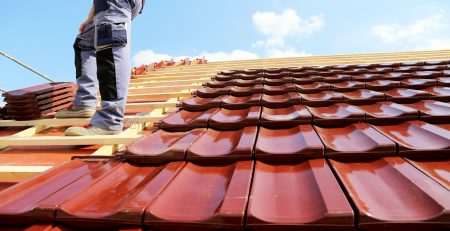Inspect Your Roof When the Snow Melts
Winters can be hard for everyone. The cold, the snow and ice can really cause a lot of problems for transportation, heating, and just going about your day.
However, your home, and your roof, in particular, is also affected by winter and not in a good way.
House inspection experts at The Inspectors Company share some of the ways winter can damage your roof and why it is important to have your roof inspected as soon as the snow melts, or even sooner if you spot some of these problems.
Ice Damming
Your roof is always going to be the part of your house which is the most impacted by weather, including snow. That’s why it has sturdy construction and strong materials.
This is also the reason why the roof can withstand the weight of snow. However, as you are heating your home, some of that heat is going to warm your roof as well, causing some of the snow to melt, or the melting can occur when there is a sudden (and short-lived) rise in temperatures.
In that situation, the melting snow can start sliding off of your roof and reaching the gutters, where it can re-freeze, creating an ice dam which will prevent any additional snowmelt from safely malting and running off of your roof.
Eventually, this water will find its way in between the shingles and can cause significant damage to your roof, and the rest of the house if not repaired quickly.
Heavy Loads of Snow
As mentioned before, your roof is designed to be able to handle a lot of different elements. However, when snow falls, that is the biggest challenge for your roof. Not only because it is cold, but because of the additional weight your roof needs to handle.
The toughness of your roof depends on the part of the country you live in, and the expected amounts of snow it is projected to carry. However, even these estimates can be wrong, so any additional weight can compromise the structural integrity of your roof and can over time lead to a roof collapse.
If there is heavy snow which isn’t melting, it is always better to get it off of your roof, than leave it there for a long time, especially if there is new snow expected to fall.
Water Condensation in the Attic
When there is a lot of snow and especially if you experience ice dams, your attic may experience some water condensation issues. What’s more, this condensation may extend down to your ceilings and even walls if the situation gets out of hand.
If your shingles are damaged during the winter, this problem can become even more serious and is likely to cause more problems. Moisture in itself can be fairly unhealthy, but it is the perfect environment for mold growth and can damage the wood of your roof and cause some structural problems.
Shingle Damage
Finally, heavy snow can damage your shingles, either breaking them or dislodging them from their place.
Roofing inspectors claim that your roof is particularly susceptible to this problem if the snow thaws and re-freezes more times over a short period of the time.
If your shingles are broken or dislodged from their place, your roof is no longer fully serving its purpose. Water can get through the cracks and get into your attic, causing all kinds of problems and water damage mentioned above.
Having your home inspected after the snow thaws is a very important part of home maintenance, as the danger of damage is very real, and it increases as your home gets older.
The experts at The San Diego Inspectors Company were kind enough to share their expertise with us. If you need reliable home inspection services you can contact them at 4538 Cass St, San Diego, CA 92109, USA or by phone at 619-552-3087.



